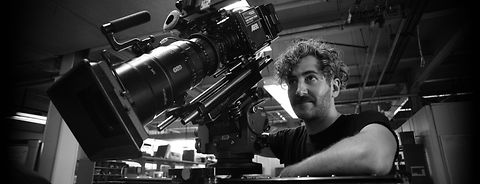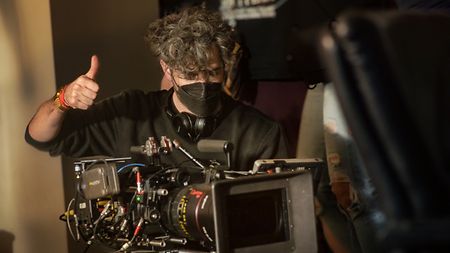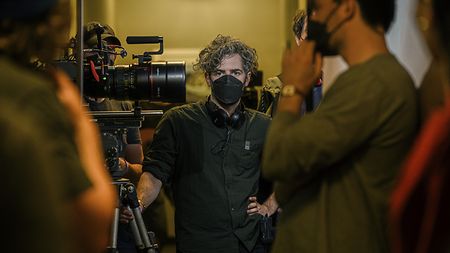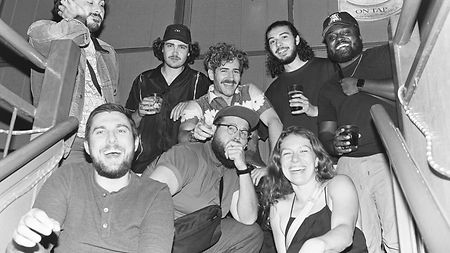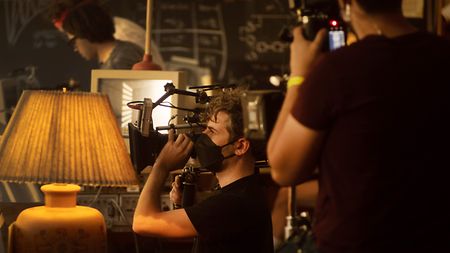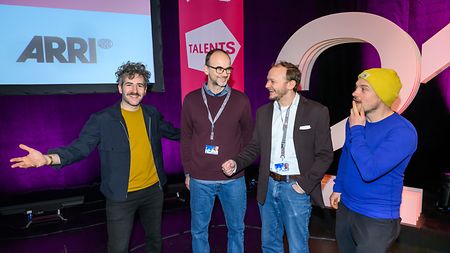And what kind of a style was that? What look and feel did you and Matt Johnson want?
We knew that if the film was going to work, we couldn't shoot it like a conventional drama with standard coverage. First of all, that's not my strong suit and, more importantly, it didn't suit the tone that we were going for. I remember that early on, Matt said the audience should be thinking, “I can't believe I'm seeing this. Am I even allowed to be here?” The shooting needed to feel like it was being caught in the moment, almost by pure chance or clandestine filming. As a result, we chose to be as far away from the action as possible, on long zooms. We chose locations that allowed us to witness the action from several rooms away, through multiple layers of glass. When those locations weren't available, we would build them, or sometimes just build a window to get us further away. We wanted it to feel like the audience was being let in on a secret.
Much of the shooting ethos of classical cinema was developed in a time when the goal of cinematography was to create a visual language out of conventional shots: the “every frame a painting” kind of thing. The assumption is that the more control a filmmaker has, the better they are. I think there's some merit to that, and I’m as much a Roger Deakins fan as anyone. My own shooting ethos, on the other hand, comes from watching YouTube videos and home movies sent to me from a mobile phone. There’s an entire parallel cinematic language out there, and that's the language of the “real.”
I truly believe that the general public, especially anyone born in the 1980s or later, understands this language much better than they do the language of conventional cinema. That's why I, along with Matt and the whole Zapruder Films team, have been so obsessed with mixing those two worlds. It's incredibly powerful when you can harness the language of “real” footage but have a huge degree of cinematic control. I believe we've only scratched the surface of these ideas with “BlackBerry,” and we will continue to see how far we can push it.
Zooms are not often used for narrative drama – what was it like using them on this shoot?
We had an interesting puzzle to solve with this film, in that we were trying to capture scenes in long, single takes with minimal setups and usually from only one or two workable angles. We needed to feel the spaces as living and breathing offices where work was being done, but at the same time be able to get into a screaming close-up when someone was having a moment of realization. One solution was to capture the wides almost by accident as the camera was searching for the action, eventually crashing into the close-up on the characters, almost like the camera operator was trying to figure out what was going on by reading lips.
Another solution was to stage the scene as a long continuous zoom, starting with the whole environment, but landing on the character's subjective experience. The result of doing this in a continuous zoom, rather than as a cut from wide to close, is that you feel the world is quite literally closing in around them. We used this every time Mike was getting bad news on the phone, and also in the final confrontation between Mike and Jim, where in some ways they are both getting bad news.
People think of zooms as belonging to the language of comedy, reality television, and documentary. Perhaps this is why the film gets so many comparisons to “The Office.” Personally, I think a well-timed zoom has the same power as a dolly-in or any other dynamic camera move. You can almost think of it as a cut plus time. Don't get me wrong, it's great for landing a funny moment, but it can also land a dramatic one or give you an unsettling feeling. Used correctly, it’s a subconscious signal to the audience that the camera operator thinks something is interesting, and worth a closer look. Used in the inverse, with a zoom out, it can make us feel uncomfortable, or like we're trying to get away.
